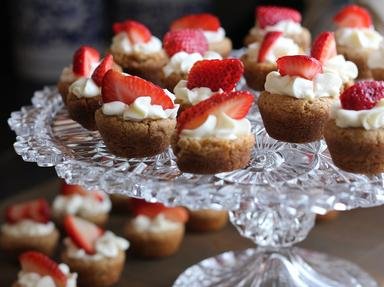
Where did you get that pud? Trivia Quiz
Desserts of the world match quiz
This quiz is about one of my favourite foods groups - desserts! (Or puddings, if you are British). In this quiz, all you have to do is match the dessert with the country (or geographical area) it is usually associated with.
A matching quiz
by heatherlois.
Estimated time: 3 mins.
- Home
- »
- Quizzes
- »
- Hobbies Trivia
- »
- Food & Drink
- »
- Desserts